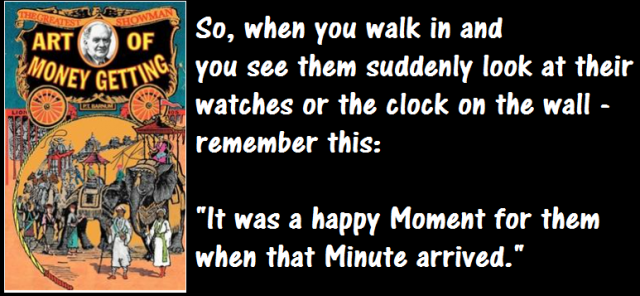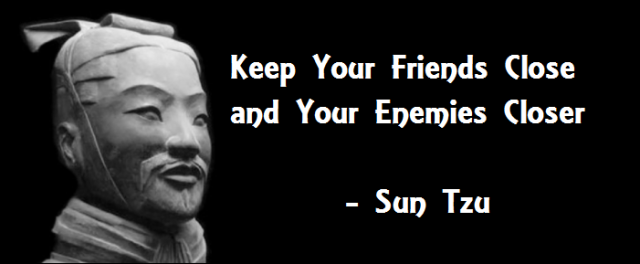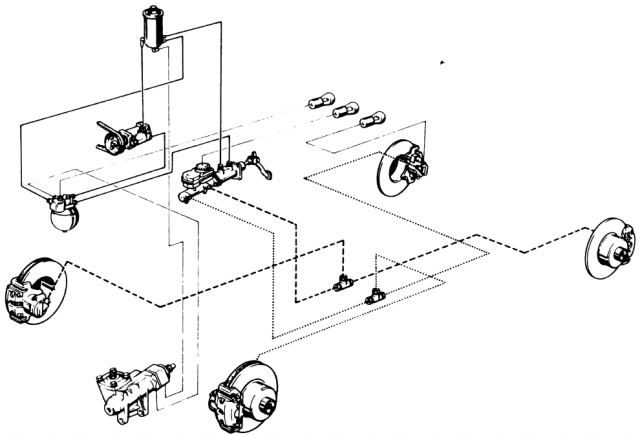You have a 2013 - and "Hill Assist" seems to be the "in thing"? Yikes - might be more of a Brake service than a Hill Assist problem.
I may not have a way to fix it, but I may have a way to make the condition a little less of a headache or problems with "stalling" when trying to move from a stopped position.
It needs your attention - for if you don't spend the time knowing your vehicle well enough, the next time you're in for service, those guys on the other side of the counter are going to think of "P.T. Barnum" as "There's one born every minute".

Following
@scotman lead - the "Hill" assist condition needs to clear first before the vehicle can even go forward. So the issue surrounds the "holding" of the brakes for a longer time than needed.
IF you own an Automatic - you might feel a "tug" or jerk, even hear a "clank". But if you own a manual, begin to engage the gear only to find - it "sticks". Could be the Hill assist - but is it because of "Hill assist" or is your BRAKE Light and "Cruise control" switch are not fully releasing? Hill Assist is not SUPPOSED to be on, but if it thinks something can go wrong - it might engage "Park Assist" moment and actually check for objects it may sense - that is if you have Park Assist. It's those little sensors that look like rivets in the bumper - if you have those - it may engage a collision avoidance condition.
If you don't then the following can pretty much apply to you, in fact it can apply to anyone whom still owns a "real" car these days that requires you to be responsible for it. As in - you drive and are in, control of the vehicle - not ones that - it "drives itself" and you're left to update your Facebook Status...
It "Hill Assist" also looks at Clutch and "Clutch Engaging" switch too...Along with if there happens to be a clearance issue from the Parking Brake Handle getting a little too tight in adjustment? The "Oh S*it" Handle right next to you just behind the shifter - between the seats...
All of the above I've have had to rule out one step at a time to solve this condition for myself.
Why?
Because...it only needs to happens twice - once with myself - ok, it's on me - but when the Wife's in the car with me and it does this - ok, there's a real condition I need to investigate.
Hmm... Might want to sit down with your car and have a chat with it - as in open the drivers side door and start looking underneath the dash to locate the Brake Clutch and Accelerator.
Ok, you found the pedals, but are you also seeing their levers and special tabs that seem to hit against other switches?
Yeah, those too, if they are goofed up or stuck or plugged with belly button lint, Ear Wax and Bug Spray and Floor Mat Dirt - might be a problem.
They are mechanical and use physical plunger stems hooked up to springs that help keep tension on the plunger so it can operate a set of contacts to show some type of action is occurring at the pedal. Same with your Brakes - if these plungers are stuck - worn or otherwise questionable - they may not send the right signals properly to clear a condition.
For the Brake - you have two - a Blue / White and Solid Black - one controls the Brake Light, the other controls "Cruise Control".
As a redundant system, the Brake Light Switch is the eventual override and has final say - so you know - the Brake lights have to be on to help the system CLEAR a condition.
The Cruise Control switch, also helps with Brake to offer "Hill Assist" - but does not have Final Say. If it is damaged though - the Brake Light is the only thing left in the deck of cards in which is has to play and have any chances of a winning bet. So if both switches are adjusted properly - the Hill Assist condition never occurs UNLESS IT IS SET, because both switches are sending Signals to keep specific conditions "cleared".

IF the shafts are dirty or coated with something - this can cause a "slow release" worse than an Aspirin, at least the timing part of it. You don't feel well in pain, so you take it and 24 hours later you're back to work - only now does the pain seem to subside after you suffered thru it. Ok, maybe not that much drama - well, you get the idea - might want to investigate their throw - from release to full extension - make sure the plungers are seemingly wanting willing and able to be working and not sticking in one position or even if they are even there - some switches can fall out of their seats and dangle - which can cause issues when you didn't think they could because you noticed a quirk but the condition seems to have cleared itself - until now...
Ok, the above was a overview of something I had to solve thru a series of steps you normally don't have to do unless the "Stick" of the brakes at a complete stop becomes a stall and possible endangerment issue of others you're in the way of. This was occurring on a NEW vehicle - so this can become a chronic issue if I don't participate and learn how this "Hill Assist" even works.
Hill Assist works when you engage the system, it is designed to keep the Brakes from releasing and forcing the vehicle to roll uncontrolled before you engage the gears from a complete stop.
It has sensors that look for motion, and your input to the system from you moving into gear and releasing the brakes - if one input is not right it attempts to compensate - but if the input never is restored to a sensible condition when you DON'T need it - the system cannot process the events correctly and can cause erratic operation. You have to cause a secondary event - again an override condition "Brakes" needs to be reset - reseated by you - to release the brakes. Other input even from the MAF/MAP sensors is used to determine how much force is being applied to the wheels to make them move and will release the solenoids to allow the Brakes to be operated normally.
Ok, Firstly - Get a spotter to help you - but you have to find out how "well" the Brake System is - find it's condition.
Engine Off - left overnight...
Press on the Brakes - slowly, let the spotter know when your foot is on the Brake - then continue to slowly press down - have them tell you to "STOP" when they see your Brake Lights light up - remember this position and how far you have to press the pedal down...
When you start your car in the morning or first time from an overnight - do you ever check to see if the Brakes are still even able to be pressed? Does the Brake pedal still work when the engine is left parked overnight? Leave the Engine off - does the pedal seem stiff - short - not heading to the floor like it does when you drive? IF it doesn't feel like there is any reserve in the Brake Pedal - Stop right here - you may a found one of many main reasons for the condition you speak of. The BOOSTER that holds the vacuum the motor produces - is supposed to hold vacuum nearly indefinitely unless you...
A - have a foreign object stuck in a pivot point of the brake lever.
B - The Plungers are pressing on the pedal - not enough clearance to let the plungers operate and seat freely.
C - One Plunger is unseated or its wiring connector is not seated
D - Stalled Motor and need a reserve to pull off to the shoulder to stop.
If you only Selected D then proceed - else you'll have to investigate why you don't have reserve vacuum.
If you only need to press a couple of times and the vacuum is used up - this is normal.
But if it's flat-stiff and you have to really press hard to make the Brake Light work - yes, you'll need to look into why the Pedal Push Rod is causing this.
So far we have covered,
Brake Light - how far down does the Pedal need to be pressed before the Brake Light - lights?
Brake Pedal - Stiff Operation left parked overnight means loss of vacuum or an air leak in the system - might cause a problem with low vacuum or slow release of brake fluid from the lines back into the master cylinder from the lack of pressure to return the booster to a balanced condition.
Improper Plunger Operation - sticking or slow release of switching conditions can cause a timing release problem - the vehicle loses it's ability to sense conditions properly and act accordingly.
Other Things to think about...
Age - if the vehicle sits overnight and encounters a loss of vacuum, The Push rod can "sink" causing the brake light plunger to move. It may cause the brake lights to come on when you're not noticing them - then they are shut off overnight because the Battery drain system sees this as a load and shuts off all electrical within a given set time - so the Brake lights don't drain down the battery. You don't see this because the Battery Minder system is doing it's job.
- A potential way to detect this condition is to see if the Brake lights "flash" when you turn the key to IGNITION or START - the flash is from the clearing of a condition it does in an initialization of the system - this may be a tell-tale sign of problems with the switches - not necessarily with the brakes.
Parking Brake clearance - check the operation - does the brakes drag? How many clicks before it sets the rear drums?
Take a simple 2 ton floor jack - Chock front wheels keep it in gear (3rd works well) use a low-profile floor jack so you can place it under the rear "axle" cross member and lift rear wheels. It's pretty light back there, so with care, find center, to place the jack in the center, of the cross member and lift the rear of the vehicle so the rear wheels can be spun freely.
- Parking Brake off...
- Wheels able to spin freely or do you have difficulty?
- If it takes an effort to spin and not spin easily - the brakes are dragging - at least in the Drum of the one you're attempting to spin. This side needs adjustment or a closer inspection of Brake Cable and Shoes in the drum.
- If easy to spin - go to the Parking brake and lift to one click - then repeat the above.
- Still easy? - Go to 2nd Click and try again - repeating the spin attempts.
- Keep clicking one click and repeat until the wheels can't spin freely.
- Does one stop sooner than the other? Service that quicker stop - side soon, investigate the imbalance between the drums.
Using the above information - assess the Brakes...
Parking Brake uses 4 to 5 clicks and one slows but still will move with some effort - but next click they are both stopped - it passed this test result is normal.
Parking Brake uses 2 to 3 clicks and Brakes drag - but will move with effort - Ok, it's a little tight but also remember age can make the adjusters work differently as the pads wear down - this is a sign that perhaps the brakes have dragged before or the ABS/TRAC or even the Hill Assist system - engaging - is forcing the adjusters to work harder then they should - this might mean the Parking Brake might need to be backed off a turn of two to start engagement at 5 clicks to provide more room for "hill assist" solenoid to acquire and hold a given level of fluid - so that as it's released it does not force a dragging condition and make the Adjusters work harder to reseat the pads to the drums.

Brakes (The hydraulic side) are two redundant systems operate in pairs of opposite corners - so one system works Front Disc and opposite side Drum (Or Disc) - so does the other system.
If one of these systems is contaminated, with Debris or the pads of the Disc or Drums are not evenly worn, this indicates the Brake system needs service - soon - and if not inspected and corrected - can cause a crash from loss of control in braking.
This may mean brake lines are contaminated or damaged or the caliper and piston system is worn, or pads thickness is too thin and have reached the end of their service life. The Parking Brake is the mechanical lever system for Rear Drums/Disc but also can - if too tight in adjustment - force the pistons to retain pressure in the lines causing the front calipers to drag also - creating an unstable condition which should be investigated and corrected as soon as possible.
The above is preliminary and is designed to be a guide to help you - it is not meant to diagnose or cure any diseases you or your vehicle may have.




